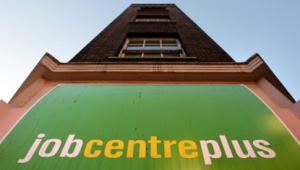Public sector borrowing for 2011/12 totalled £126bn, the Office for National Statistics has revealed.
This means that Chancellor George Osborne met the revised borrowing target in last month’s Budget but overshot the £122bn estimate in the 2011 Budget statement. The Office for Budget Responsibility had increased its projection following deteriorating economic forecasts amid the eurozone crisis.
Annual borrowing was £10.9bn lower than in 2010/11, according to this first estimate of the whole year finances.
The ONS also revealed that public sector net borrowing in March was £18.2bn, £200m higher than in the same month in 2011.
The OBR said that borrowing for the financial year was in line with the estimate it produced in last month’s Economic and fiscal outlook.
It has calculated that central government expenditure grew by 2.0% in 2011/12, lower than the predicted 2.3%. Spending on public services was down by 0.1% on the year before – the first time that such spending has fallen in a financial year since 1955/56.
The OBR report on the latest figures added that March’s borrowing was more than £2bn above market expectations of £16bn. This was due to a weakness in central government receipts, with PAYE and corporation tax receipts both depressed. Overall, tax receipts rose by just £600m in March, compared with last year, while central government current expenditure rose by £2.2bn.
The Centre for Economics and Business Research said total public sector net borrowing had now fallen for the second consecutive financial year, signalling that austerity was having a positive impact on the public finances.
CEBR economist Daniel Solomon said: ‘Declines in public sector net borrowing typically indicate that the government is improving the management of its finances. Today’s figures show that while austerity may be unpopular in many quarters, the government has so far had some success getting its fiscal house in order. Encouragingly, this figure meets the Office for Budget Responsibility’s target for public sector borrowing.’
However, Nida Ali, an economic adviser to the Ernst & Young Item Club, said that March’s borrowing represented ‘a lacklustre end to the financial year’.
Ali added: ‘The outlook for the UK's public finances is very uncertain. The eurozone crisis continues to pose a significant threat to the economic outlook, and it's possible that the OBR's growth forecasts will prove to be too optimistic. This will inevitably have adverse consequences for public finances and suggests that borrowing may not come down as quickly as the OBR currently expects.’
The ONS has also provided details of the impact on local government finance of the abolition of the Housing Revenue Account subsidy system.
Local authorities became self-financing for council housing on April 1, retaining their locally raised rents and taking on the historic housing debt. To prepare for this, authorities that were subsidised under the previous system were given a one-off payment to reduce their debts, while those that provided more into the central pot had to borrow from the Public Works Loan Board to ‘buy out’ the system.
The PWLB loaned £12.9bn to these local authorities, at the reduced interest rate announced by the government last September.
On March 28, councils paid £13.4bn to the Department for Communities and Local Government to cover the debt. For the subsidised authorities, the DCLG paid off £5.3bn of local authority debt held by the PWLB.
The HRA reform had no effect on overall net public sector borrowing. Central government borrowing was reduced by £9.7bn, while net local authority borrowing increased by the same amount.





















